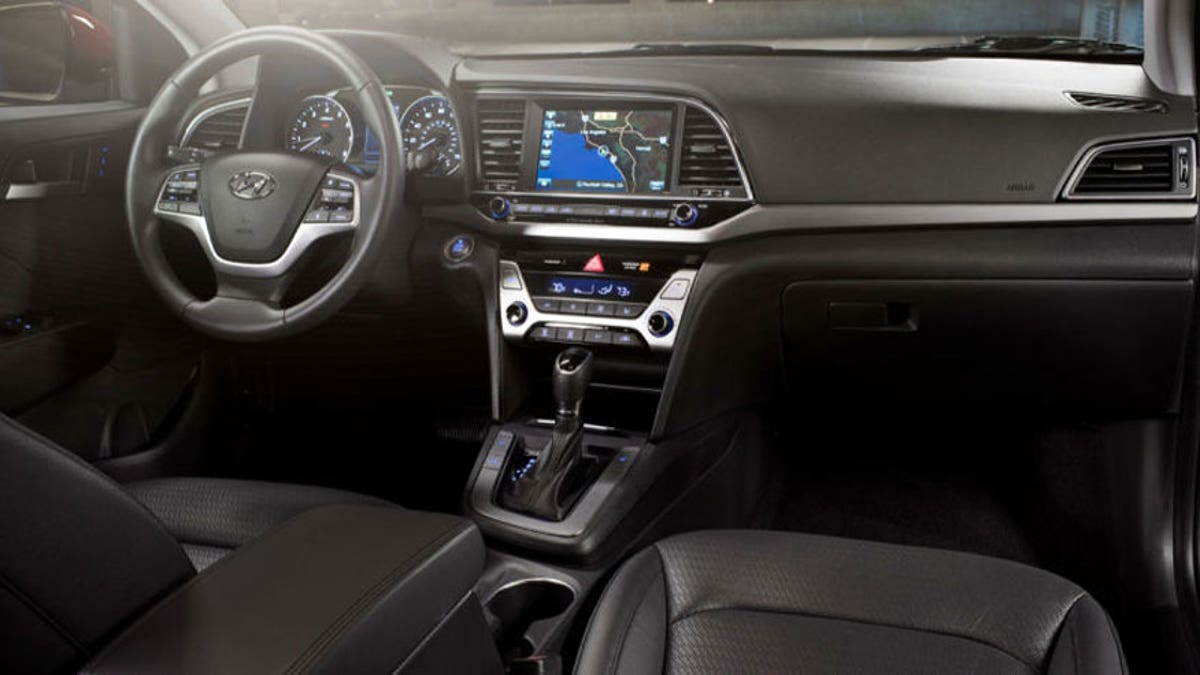
(Hyundai)
Often relegated to "first new car" status in many buyer's minds, the current crop of new compact sedans strives to be more mature and grown-up. Redesigned for 2016, the Hyundai Elantra joins a graduating class of newly designed competitors, including the Chevrolet Cruze and Honda Civic, that aim to feel more substantial and upscale—regardless of their size.
At first glance, it's easy to confuse the 2017 Hyundai Elantra for Hyundai's midsized Sonata sedan. While the Elantra retains a class-standard 106-inch wheelbase, somehow Hyundai eked out two more inches of rear-seat leg room. Cabin space feels much like a midsized sedan from a decade ago, rather than a cramped compact car. The open and airy feeling inside is helped by windows that seem slightly larger than the previous Elantra, as well as a dashboard design that avoids the enveloping, cockpit-like feeling found in many rivals.
One of our complaints about the outgoing Elantra (2011-2016) is that its fuel economy of 27 mpg overall had fallen behind competitors, especially the super-efficient Mazda3 and Toyota Corolla. New engines aim to regain that lost ground.
Most Elantras will have a new 2.0-liter, 147-hp (estimated) four-cylinder. Hyundai eschews using a continuously variable transmission (CVT); increasingly popular, these very efficient transmissions are found on the Civic and Corolla, among others. Instead, Hyundai prefers to stick with a six-speed automatic as the Elantra's core gearbox. While conventional automatics typically feel more natural when accelerating than CVTs, we'll see if this choice forces a trade-off with fuel economy. Efficiency-minded buyers can opt for the Eco model, which comes with a small-displacement 1.4-liter, 128-hp (estimated) turbocharged four-cylinder with a seven-speed, dual-clutch automatic transmission.

(Hyundai)
More From Consumer Reports
Previous Elantras were fairly noisy inside, and their generally compliant ride suffered from the occasional rubbery jiggle. Thicker window glass, added firewall sealing, and extra foam insulation aim to quell the racket. While the rear suspension remains a torsion beam design, as opposed to a more expensive (and typically better performing) independent set-up, changes in geometry aim to improve the ride.
As expected from a newly introduced car, advanced safety equipment is added to the options list. Blind-spot detection will be available on multiple trim levels, while the top-trim Limited will offer forward-collision warning with automatic braking and pedestrian detection, lane-departure warning with lane assist, and adaptive cruise control. We also expect both Apple CarPlay and Android Auto from the new Elantra, but there will be a wait for their introduction.
Overall, the 2017 Hyundai Elantra appears to be a solid step ahead for the automaker's compact sedan. Since Hyundai has built much of its reputation on providing value, we're curious to see how its pricing compares to the competition, as prices in this class are growing along with compact sedan sophistication.
Copyright © 2005-2015 Consumers Union of U.S., Inc. No reproduction, in whole or in part, without written permission. Consumer Reports has no relationship with any advertisers on this site.